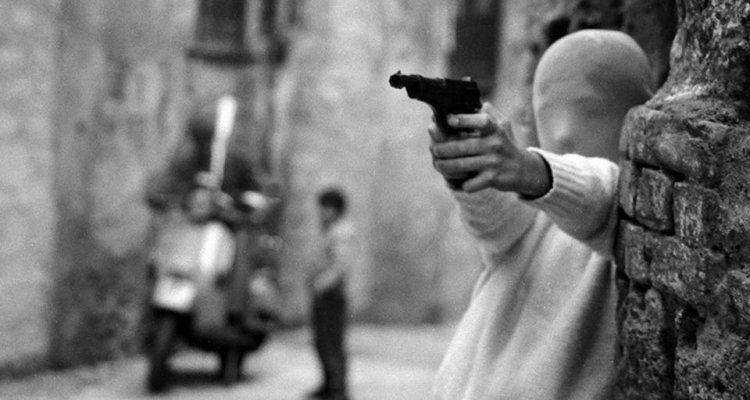“Shooting the Mafia” is the latest in a career’s worth of socially conscious, politically charged documentaries from director Kim Longinotto. Having previously explored issues ranging from sex trafficking (“Dreamcatcher”) to genital mutilation (“The Day I Will Never Forget),” “Shooting the Mafia” finds Longinotto documenting the life of courageous Italian photographer Letizia Battaglia. Battaglia’s shocking crime scene photojournalism, graphic work which frequently depicted slain corpses and sobbing mothers, appeared in the left-wing newspaper L’Ora and directly confronted the Sicilian mafia in a way that few others dared. Longinotto’s tribute to Battaglia is engaging and inspiring, albeit somewhat unsatisfying as a documentary.
READ MORE: Sundance 2019 Film Festival Preview: 25 Must-See Films
The first half of “Shooting the Mafia” is fully concentrated on Battaglia, chronicling her life via an eclectic mix of present-day interviews, news footage, scenes from classic Italian films, and, of course, her haunting black-and-white photography. Longinotto employs everything from authentic home movies to stock footage to visualize the photographer’s memories. The disparate threads combine to evoke 20th century Sicily in a manner that is evocative and bleakly poetic, with memorable non-sequiturs like clips of a room full of adolescent boys smoking cigarettes and playing cards.
READ MORE: The 100 Most Anticipated Films Of 2019
Battaglia, now 84 years old, is a charming and intelligent subject with a fascinating personal history. She speaks frankly about her struggles with mental illness, a fractured relationship with her children, and her failed romances (in a wonderfully European touch, several interview subjects are credited as “ex-lovers”). “Shooting the Mafia” is at its best when hanging on Battaglia’s words, utilizing her devastating representations of Sicilian life to powerful effect. It’s particularly intriguing to hear Battaglia discuss her own complicated relationship with a body of work which won her great acclaim by documenting the tragic oppression and suffering of her people.
READ MORE: The Most Anticipated Films By Female Filmmakers In 2019
Battaglia’s photojournalism played an important role in Sicily’s agonizing attempts to prosecute the Cosa Nostra, the sinister crime syndicate that essentially controlled the region through illegal channels, protecting their power with violence and murder (Battaglia describes times in which she would report to four or five crime scenes in a single day). The Cosa Nostra’s influence was so pervasive and engrained in Sicilian life that Battaglia’s defiance, like installing an exhibit of photographs depicting the crime scenes of mafia-related homicides in a crowded town square, was truly groundbreaking.
READ MORE: The 25 Best Films Of 2019 We’ve Already Seen
Longinotto uses this opposition as an entryway to broaden the film’s horizons, pivoting from Battaglia’s personal saga to focus on criminal charges brought against the mafia. Unfortunately, this results in long segments of courtroom footage and newsreels of mob hits and angry protests which diminish the documentary’s narrative drive.
READ MORE: 18 Sundance Film Festival 2019 Premieres That Already Have Our Attention
Longinotto’s film is caught between the immediacy of Battaglia’s experiences and a larger, more comprehensive examination of the crippling impact the Cosa Nostra had on Sicily. The latter would be more than enough to fill any doc, never mind one that also attempts to be a biography of sorts. “Shooting the Mafia” is most fascinating when it uses Battaglia’s story, her reminiscences, and her unforgettable photographs, to show rather than tell the painful circumstances of Sicilian life under mob rule. [C+]
Check out all our coverage from the 2019 Sundance Film Festival here.

